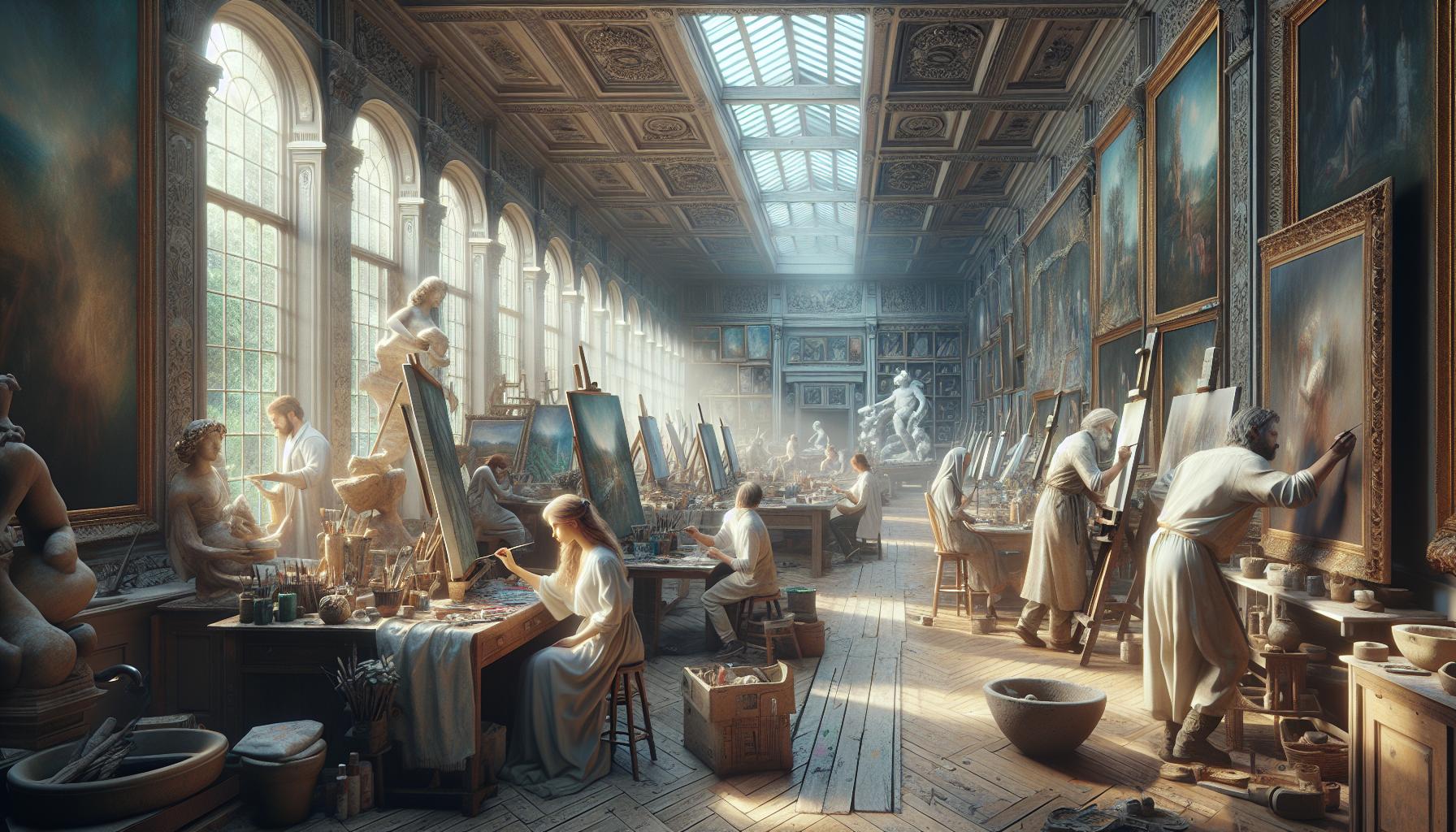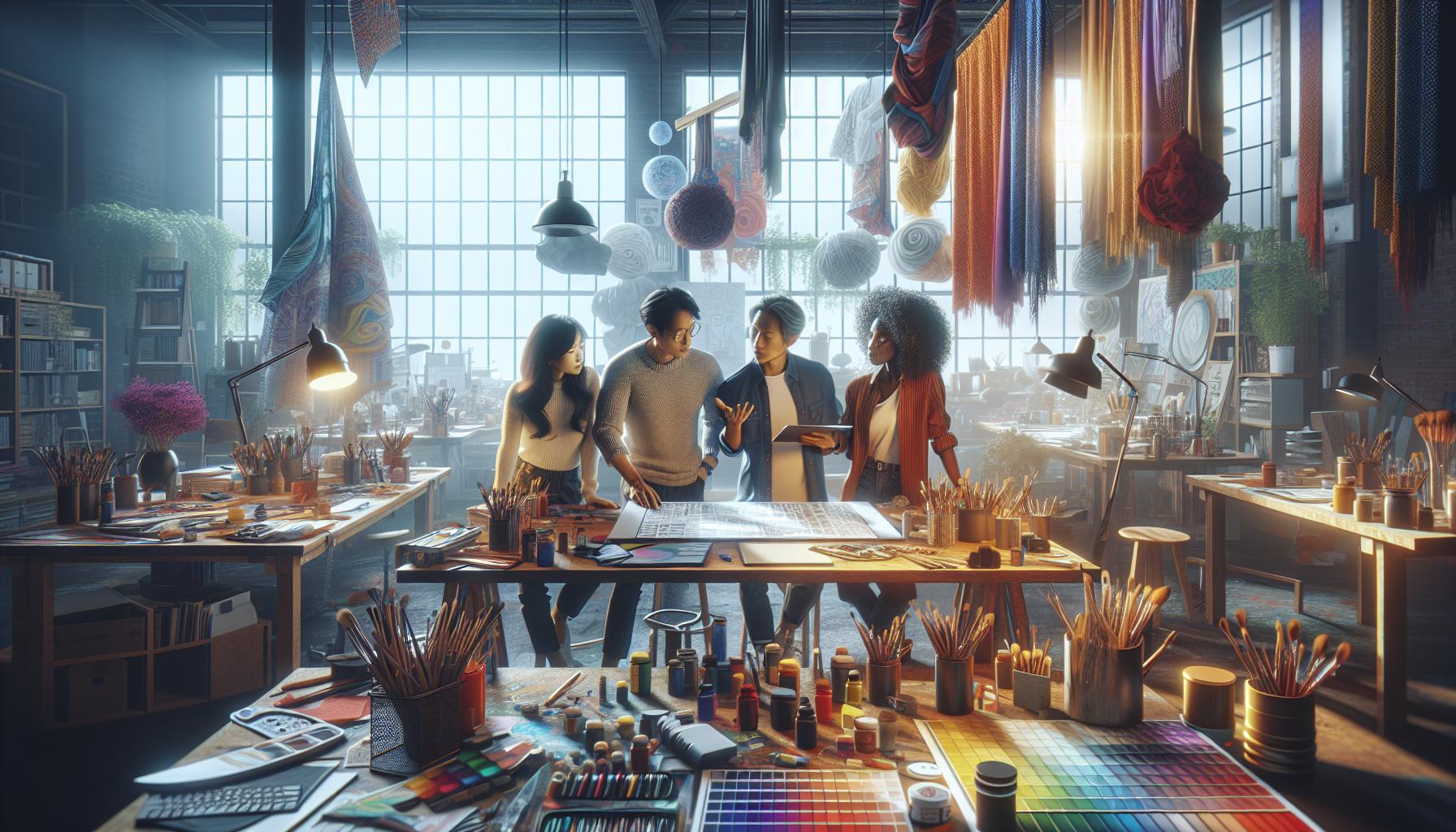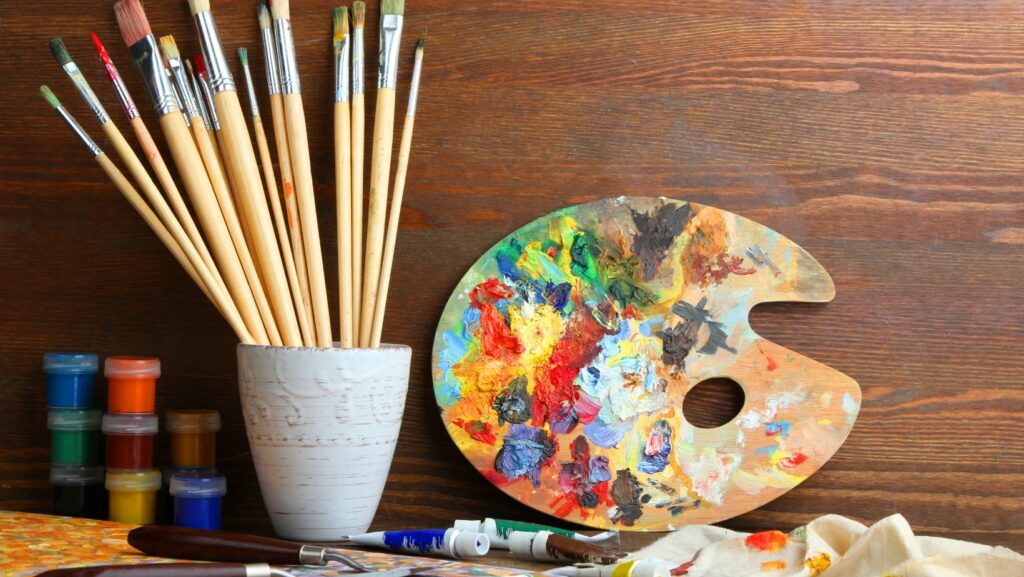Masters in Art
- Master’s in Art Significance: This advanced degree enhances artistic skills, critical thinking, and personal expression, serving as a vital career boost for aspiring artists.
- Diverse Program Options: Various specialized programs exist, including MFA, MA, MDes, MAEd, and dual degree options, catering to a range of interests and career paths.
- Admission Insights: Applicants typically need a relevant bachelor’s degree, a strong portfolio, and to meet other academic requirements to navigate the competitive admissions process.
- Comprehensive Curriculum: Core and elective courses provide a well-rounded education, focusing on essential artistic skills and specialized techniques aligned with students’ aspirations.
- Career Pathways: Graduates have access to diverse roles such as Art Director, Graphic Designer, and Curator, with potential for increased salaries and professional growth.
- Consideration of Pros and Cons: Weighing benefits like enhanced skills and network against challenges like tuition costs and market saturation is crucial before pursuing a master’s in art.
Pursuing a master’s in art opens doors to a world brimming with creativity and innovation. This advanced degree not only hones technical skills but also fosters critical thinking and personal expression. For aspiring artists, it serves as a transformative journey that deepens their understanding of various art forms and practices.
In today’s competitive landscape, a master’s in art can significantly enhance one’s career prospects. Whether it’s painting, sculpture, or digital media, specialized programs equip students with the knowledge and experience needed to thrive in diverse artistic fields. As they navigate this enriching educational path, they gain invaluable insights that empower them to make meaningful contributions to the art community.
Overview Of Masters In Art
A master’s degree in art offers a refined approach to creativity and technical skills, fostering critical thinking within various art disciplines. This advanced degree serves as a pivotal step for aspiring artists aiming to make a significant impact in the art world.
Definition And Importance
A master’s in art refers to a graduate-level program focusing on artistic development and studio practice. It plays a crucial role in enhancing an artist’s capabilities, providing rigorous training in specific mediums, techniques, and conceptual approaches. This degree encourages artistic exploration, enabling students to cultivate a unique voice while building a robust portfolio. Moreover, such a program often establishes valuable connections within the art community, essential for professional growth.
Types Of Programs Available
Several types of master’s programs in art exist, each catering to different artistic interests and career paths.
- Master of Fine Arts (MFA): Primarily focused on studio practices, this program emphasizes developing skills in various art forms, including painting, sculpture, and photography.
- Master of Arts (MA): Typically combines art history, theory, and criticism with studio work, suitable for those interested in both creative and academic perspectives.
- Master of Design (MDes): Concentrates on design disciplines, facilitating a blend of creativity and problem-solving across fields like graphic design, fashion, and industrial design.
- Master of Art Education (MAEd): Aims to prepare educators in the arts, covering teaching techniques and curricular development tailored for art education settings.
- Dual Degree Programs: Combine a master’s in art with another discipline, such as business or psychology, offering a multidisciplinary perspective.
These varied programs cater to a wide range of artistic goals and professional aspirations, enhancing overall career prospects in the creative industry.
Admission Requirements

Admission to a master’s in art program demands specific academic and procedural criteria that applicants must meet. Understanding these requirements can streamline the application process and increase the chances of acceptance.
Academic Qualifications
Academic qualifications typically include a bachelor’s degree in art or a related field. Applicants might need to demonstrate a solid foundation in both theoretical and practical aspects of art. Relevant coursework in studio art, design, or art history enhances a candidate’s profile. Additionally, some programs require a minimum GPA, often set at 3.0 on a 4.0 scale. Prospective students may also need to submit a portfolio showcasing their artistic work, reflecting their skills and creativity.
Application Process
The application process varies by institution but commonly involves several key steps. Applicants usually fill out an online application form that requests personal information, academic background, and professional experience. They often need to provide transcripts from previous academic institutions.
Most programs require letters of recommendation, typically from professors or professionals familiar with the applicant’s work and character. A statement of purpose articulating the applicant’s goals, influences, and reasons for pursuing the degree is essential. Some programs may also necessitate interviews or submission of additional materials based on specific criteria.
Staying organized and adhering to deadlines ensures a smooth application process and improves the likelihood of acceptance into a master’s in art program.
Curriculum And Coursework

Master’s programs in art offer a comprehensive curriculum combining core subjects and elective specializations. This combination equips students with a solid foundation while allowing them to tailor their studies to their interests.
Core Subjects
Core subjects focus on essential skills and knowledge that underpin artistic practice. Students typically engage with courses such as:
- Art Theory: Explores historical and contemporary theories, enhancing critical thinking about art.
- Studio Practice: Provides hands-on experience in various mediums, reinforcing technical abilities.
- Art History: Examines art movements, impacts of culture, and influential artists, deepening contextual understanding.
- Research Methods: Teaches methodologies for academic inquiry, essential for thesis development.
These subjects create a balanced educational environment, encouraging artists to develop their specific voice.
Elective Specializations
Elective specializations allow artists to explore specific areas of interest and enhance their unique skills. Common options include:
- Painting: Focuses on advanced techniques in various painting styles.
- Sculpture: Introduces materials and methods for creating three-dimensional works.
- Digital Media: Covers contemporary practices using technology in art creation.
- Art Education: Prepares artists for teaching roles, emphasizing pedagogical methods.
These specializations enable students to pursue individual aspirations, contributing to well-rounded artistic development.
Career Opportunities

Graduates with a master’s in art access a wide range of career opportunities across various sectors. This advanced degree equips individuals with skills and knowledge applicable in numerous creative fields.
Potential Job Titles
Graduates may pursue the following job titles:
- Art Director: Oversees visual aspects of ad campaigns, publications, and media projects, ensuring cohesive artistic vision.
- Graphic Designer: Creates visual content for print and digital media, focusing on layout, typography, and branding.
- Fine Artist: Produces original artworks, such as paintings or sculptures, for galleries, exhibitions, or private clients.
- Art Educator: Teaches artistic techniques and theory at schools, colleges, or community art programs, fostering student creativity.
- Curator: Manages collections in museums or galleries, organizing exhibitions and enhancing public engagement with art.
Salary Expectations
Salary expectations vary based on job title, experience, and location. Below is a table showcasing average salaries for selected positions:
| Job Title | Average Salary (Annual) |
|---|---|
| Art Director | $94,000 |
| Graphic Designer | $56,000 |
| Fine Artist | $50,000 |
| Art Educator | $59,000 |
| Curator | $70,000 |
These salary figures indicate the potential financial benefits associated with careers in the arts, highlighting the value of a master’s degree in enhancing earning potential.
Pros And Cons Of Pursuing A Masters In Art
Pursuing a master’s in art presents several advantages and disadvantages that aspiring artists should carefully consider. The decision involves weighing the benefits against potential drawbacks.
Advantages
- Enhanced Skill Set: Students gain specialized knowledge and advanced skills in various artistic techniques, contributing to artistic growth.
- Increased Career Opportunities: Graduates qualify for higher-level positions, expanding their prospects to roles like Art Director and Curator.
- Expanded Network: Programs facilitate valuable connections within the art community, fostering collaborations and potential job opportunities.
- Portfolio Development: An intensive program nurtures the creation of a strong portfolio, essential for showcasing unique artistic styles to employers.
- Access to Resources: Students often gain access to state-of-the-art facilities, tools, and mentorship, enhancing their educational experience.
- Critical Thinking Development: Rigorous coursework encourages analytical thinking, improving the ability to critique and evaluate artistic works.
- High Tuition Costs: Pursuing a master’s degree incurs significant financial investment, which may lead to substantial student debt.
- Time Commitment: Graduate programs typically require two to three years of dedicated study, limiting opportunities for work during that time.
- Competitive Admission: Securing a place in reputable programs can be challenging due to competitive admission requirements and limited slots.
- Emphasis on Theory: Some programs may focus heavily on theoretical concepts, which can overshadow practical application and studio work.
- Market Saturation: The art field can be highly competitive, where a degree does not guarantee job placement or high earning potential.
- Varied Program Quality: Not all master’s programs offer the same caliber of education, making it crucial to research institutions thoroughly.
Artist’s Journey
A master’s in art represents a significant step in an artist’s journey. It not only refines technical skills but also fosters a deeper understanding of artistic expression. Graduates emerge with a unique voice and enhanced creativity ready to navigate the competitive art world.
The diverse programs available cater to various interests and career aspirations ensuring that every artist can find their niche. As they connect with peers and mentors they build valuable networks that can lead to exciting opportunities.
Ultimately this degree can transform passion into a fulfilling career enriching both the individual and the broader art community.


